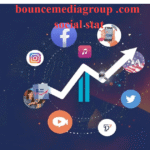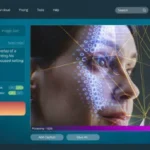In today’s rapidly evolving business landscape, the art and science of risk assessment have undergone a significant transformation due to technological advancements. This explores how cutting-edge technologies are reshaping risk assessment practices, revolutionizing decision-making processes, and enabling organizations to proactively identify and mitigate potential risks in a dynamic and uncertain environment.
The Role of Technology in Risk Assessment
Technology plays a pivotal role in modern risk assessment methodologies, offering innovative tools and solutions that empower businesses to navigate complex risks with precision and agility. By harnessing the power of data analytics, artificial intelligence, machine learning, and predictive modeling, organizations can gain valuable insights into potential threats, emerging trends, and vulnerabilities, enabling them to make informed decisions and establish robust risk management strategies that safeguard their interests and drive sustainable growth.
Data Analytics and Predictive Modeling
Data analytics lies at the heart of effective risk assessment, providing organizations with the ability to analyze vast amounts of structured and unstructured data to uncover patterns, correlations, and predictive insights. By leveraging advanced data analytics techniques, such as statistical analysis, regression modeling, and trend forecasting, businesses can identify key risk factors, assess probabilities, and anticipate future scenarios, allowing them to proactively address risks before they escalate and impact business operations.
Artificial Intelligence and Machine Learning
Artificial intelligence (AI) and machine learning (ML) algorithms are revolutionizing risk assessment by automating decision-making processes, detecting anomalies, and identifying potential risks in real time. AI-powered systems can analyze data in real time, detect patterns of fraudulent behavior, predict market fluctuations, and optimize risk-adjusted returns, enabling organizations to respond swiftly to changing risk dynamics and capitalize on new opportunities while minimizing exposure to potential threats.
Cybersecurity and Threat Detection
In an era where cyber threats are on the rise, cybersecurity has become a critical component of risk assessment for organizations across industries. Advanced cybersecurity solutions leverage technologies such as threat intelligence, endpoint detection and response (EDR), and network traffic analysis to detect, prevent, and respond to cyber attacks effectively. By integrating robust cybersecurity measures into their risk assessment frameworks, businesses can fortify their defenses, safeguard sensitive data, and protect against evolving cyber risks in an increasingly digitized world.
Integrating RMBS in Risk Assessment Strategies
The incorporation of Residential Mortgage-Backed Securities (RMBS) analytics into risk assessment strategies represents a sophisticated approach to understanding and mitigating financial risks. Utilizing RMBS analytics enables organizations, especially in the financial sector, to dissect the complexities of mortgage-backed securities, evaluate the credit risk associated with individual loans, and gauge the impact of economic shifts on investment portfolios. Advanced technological platforms and tools that analyze RMBS datasets can provide deep insights into default probabilities, loss severities, and cash flow patterns, enhancing the precision of risk assessments. This integration not only aids in making more informed investment decisions but also contributes significantly to the robustness of risk management frameworks in navigating the tumultuous terrain of financial markets.
Real-Time Risk Monitoring and Reporting
Technology enables organizations to monitor risks in real time, providing them with actionable insights and timely alerts that facilitate proactive risk management. By implementing risk monitoring systems that track key risk indicators, performance metrics, and compliance requirements, businesses can stay ahead of potential risks, make data-driven decisions, and streamline reporting processes for stakeholders, regulators, and internal audit teams. Real-time risk monitoring enhances transparency, accountability, and responsiveness in risk assessment practices, ensuring that organizations can adapt swiftly to changing risk landscapes and seize opportunities confidently.
Blockchain Technology and Risk Transparency
Blockchain technology is revolutionizing risk assessment by enhancing transparency, immutability, and security in data management processes. By leveraging blockchain’s decentralized ledger system, organizations can securely record and validate transactions, contracts, and compliance documents, creating an immutable audit trail that enhances trust, credibility, and accountability in risk assessment practices. Blockchain technology offers a tamper-proof mechanism for verifying data integrity, reducing fraud risks, and streamlining risk assessment workflows, thereby fostering greater transparency and confidence in decision-making processes.
By embracing cutting-edge technologies such as data analytics, artificial intelligence, cybersecurity solutions, and blockchain technology, businesses can enhance their risk assessment capabilities, strengthen decision-making processes, and navigate a volatile and uncertain business landscape with resilience and foresight. Explore the technological frontier of risk assessment and discover how innovation is reshaping the way organizations identify, assess, and mitigate risks in an increasingly interconnected and digitized world, propelling them toward sustainable success and competitive advantage.










